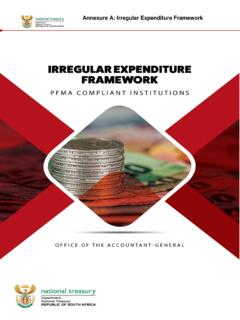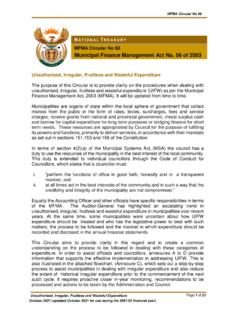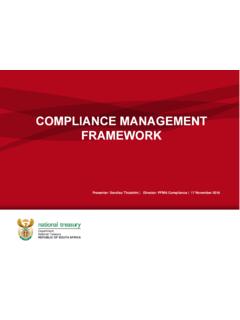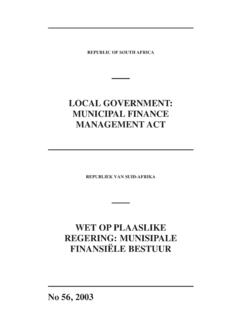Transcription of Strategies for schools to improve attendance and manage ...
1 1 Strategies for schools to improve attendance and manage lateness Crown copyright 2011 WAG10-10733F11810111 Table of contentsIntroduction 2 Strategies to improve attendance and manage lateness 2 Have an attendance policy in place 2 Make use of electronic registration 4 Use the correct and appropriate attendance codes 4 Make use of the data available 5 Have a first day contact system in place 5 Raise the profile of attendance 6 Involve parents 6 Target support 6 Use rewards and incentives to encourage attendance and punctuality 7 Positively reintegrate absentees 9 Make use of attendance checks 10 Incorporate attendance into transition planning 102 Introduction1.
2 When a child attends school on a regular basis, they take an important step towards reaching their full potential, and are given the greatest opportunity to learn new things and develop their skills. Children who miss school frequently can fall behind with their work and do less well in The more time a child spends around other children, whether in the classroom or as part of a school team or club, the more chance they have of making friends and feeling included, boosting social skills, confidence and self While the parent is primarily responsible for ensuring their child attends school regularly.
3 Where school attendance problems occur the key to successfully resolving these problems is engaging the child through collaborative working between the parent, the school and the local This document sets out some examples of Strategies that can be employed by schools to help improve school attendance . Additional information and further guidance can be found on the Inclusion and Pupil Support pages of the Welsh Assembly Government s website. These web pages include exemplar documents, leaflets, flyers and templates to support good attendance which can be adopted or adapted to suite local circumstances.
4 To improve attendance and manage lateness5. Evidence has shown that tackling absence can be most effective when a number of different approaches are adopted. The initiatives used by schools to encourage attendance are partly dictated by a number of factors including the age of pupils, parental interest, geographical location and social and economic circumstances. Individual schools need to respond to their own particular problems in their own way. The following approaches may help in the development of a robust attendance an attendance policy in place6. A school s attendance policy should set out its systems and procedures for ensuring regular school attendance and investigating the underlying causes of poor attendance .
5 It is important that it is not just one member of staff who writes the policy. The policy will be more meaningful if developed in consultation with teachers, pupils, families, the Education Welfare Service, administrative and ancillary staff, governors and senior management. 37. The key components of an attendance policy should include the following:8. The principles underlying the policy and how they apply to the whole school community: How the policy ties in to the school s approach to promoting emotional well-being. How the policy links with the school s other policies.
6 How these principles relate to the school s overall aims and relate to the rest of the Aims and targets: Specific but realistic targets for improving and maintaining attendance figures. The resources a school invests in improving The rights, roles and responsibilities of governors, staff, pupils and parents: Details of the school s partnership agreement with the Education Welfare Service. The legal responsibilities of the LA, school and parents should be cited. Emphasis on a partnership approach between senior management, governors, and those working to support attendance with parents and pupils should be Procedures: The stages, processes and staffing involved in registration.
7 The system for lateness. How and when problems with attendance are communicated to parents. Processes used to reintegrate students returning to school after an absence. Referral criteria to support Strategies used by the school in the area of attendance : How rewards and sanctions are used to encourage regular attendance . The methods and means of achieving the school s Strategies , including any training required for staff involved in Monitoring and evaluation: How the school will evaluate the effectiveness of its Strategies . When will monitoring and evaluation take place.
8 Who will be involved in monitoring and evaluation and how will they contribute. How evaluations will be fed back into Detailed guidance on designing an effective policy can be found on the Inclusion and Pupil Support pages of the Welsh Assembly Government website. use of electronic registration15. Where possible and practicable schools should record registration electronically. Electronic attendance registration software enables more effective and efficient monitoring of attendance on a daily basis as well as allowing the identification of longer-term trends in absence which can be used to inform school policy and practice.
9 Electronic packages that automate the contacting of parents to inform them of their child s absence have also proven effective in reducing absence and locating children and young people. It also enables registration for each lesson, and the identification of lateness and post-registration truancy. Use the correct and appropriate attendance codes 16. Registration procedures need to be clearly outlined in the school s attendance policy and repeated in the staff handbook. Accurate recording is essential in order to meet legal requirements and promote the safety of all pupils.
10 17. Different schools will have different procedures for allocating attendance and absence codes. In most schools , this will involve the form or class teacher; however, it is important for all staff to have a general understanding of when each code may be used and its statistical meaning. Staff responsible for entering codes should have a thorough understanding of the issues regarding attendance . Staff should also be aware of when and to whom they should refer instances of absence in accordance with school guidelines. For example, a school might decide that it requires tutors to refer all pupils when absence through sickness exceeds a certain percentage in the year.














![Public Audit Act [No. 25 of 2004] - Gov](/cache/preview/d/e/4/d/c/b/9/8/thumb-de4dcb982923f9470777b963db2987ca.jpg)

